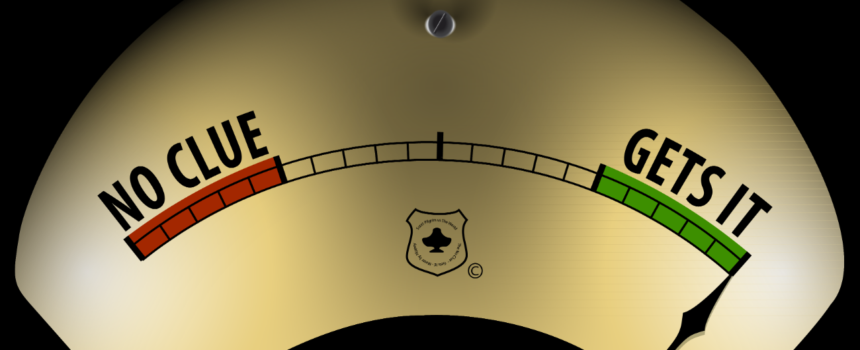There has been a dramatic shift in the way buyers perceive and interact with salespeople — as any sales manager will know. The Harvard Business Review has spoken – it’s “the End of Solution Sales.”
If you’ve adjusted your strategies and sales process accordingly, you’re ensuring success. If you haven’t, perhaps you’ve seen sales performance suffering. I have found that a sales scorecard can help you pinpoint the cause of any decline – if it’s done correctly.
Before you take the test, here’s a description of exactly what your sales scorecard should try to accomplish.
A Sales Scorecard Should Ask Tough Questions
Don’t soft-pedal your analysis. These are the types of hard questions that reveal weaknesses in your sales strategy, sales process, and relationship with your customers.
- “Are you continuously improving your sales process and performance?”
- “Do your salespeople execute a successful game plan?”
- “Do you fully leverage insight sales data to manage opportunities?”
These are the questions you and your company’s stakeholders will want to take a hard look at — and discuss vigorously. It is questions like these that will reveal the core issues that are challenging progress and thwarting revenues.
As everyone looks at the responses, each participant should be able to ask probing questions like these:
- What are the underlying causes for our responses? (Bonus tip: Get out the whiteboard and use sticky notes to consolidate all the responses. See if there’s agreement about the causes.)
- What would we need to change (process, strategy, tactic, etc.) in order to merit a higher score?
The conversation you and the other stakeholders have after comparing your results should allow you to define your areas of agreement about the best opportunities.
A Sales Scorecard Should Be Backed by Solid Evidence
A sales scorecard is just a form. It’s an analytic tool — don’t blindly base important changes without expertise and experience. Also, make sure your choice of a scorecard tool is the creation of someone with a solid understanding of the way sales are made today. Modern sales practices are significantly different from solution sales. Remember – solution sales is dead.
How can you spot modern sales posers? Take a look at their website. Check the About Us page. Read the bio. Note the convincing evidence of their reliability. Start with proof of relevant sales experience, work history, and record of success. Are they thought leaders? Take a look at their blog, their LinkedIn profile, and their Twitter ecosystem.
A Sales Scorecard Should Allow You to Compare Results Outside Your Organization
It’s a given that you will want to compare findings within your own organization, but a stellar scorecard will allow to compare with like-minded executives who are facing similar challenges within your entire industry. This way, you’ll be able to see not only where you lag in your industry, but also where you can start implementing key methods leading to short-term success. You may even find areas where you are doing well against industry averages.
The Ultimate Goal: A Stronger Foundation
Your sales scorecard results should be the start of an adventure that leads to stronger relationships with your prospects and clients, as well as better collaboration and outcomes within your own team. The direct result? More revenue, higher retention, more effectiveness, less risk. To get there, take the first step – uncover what’s been holding you back. It could be the most productive project you undertake this year!











